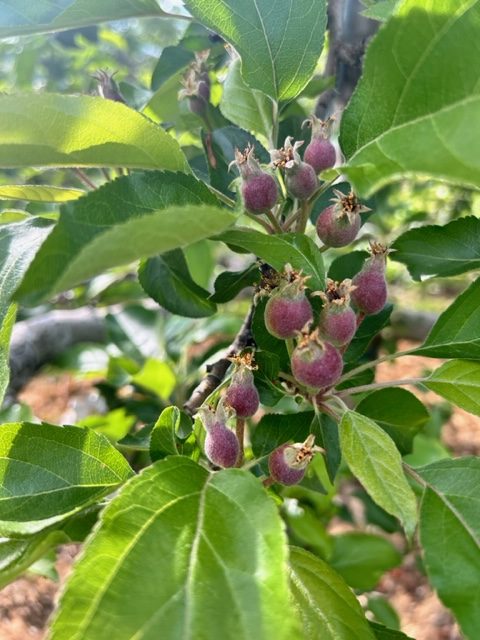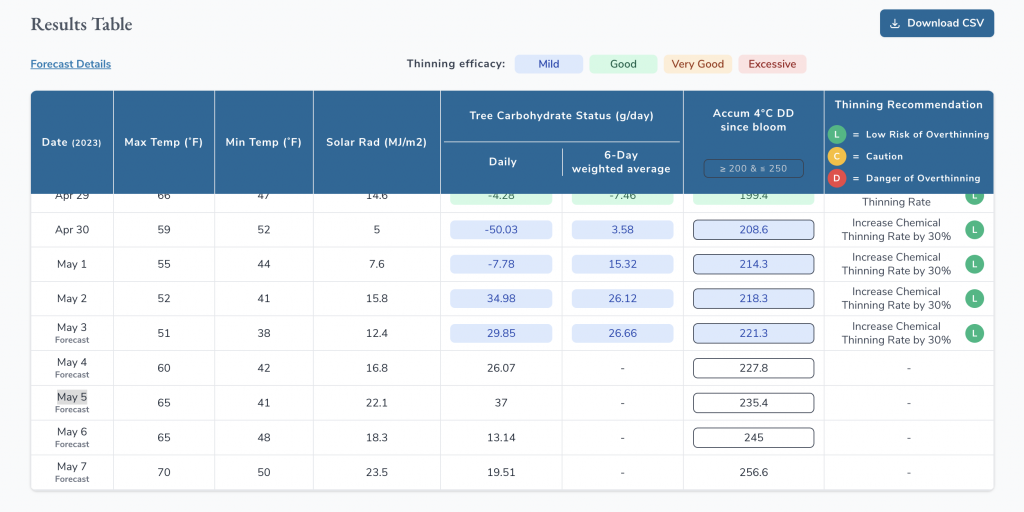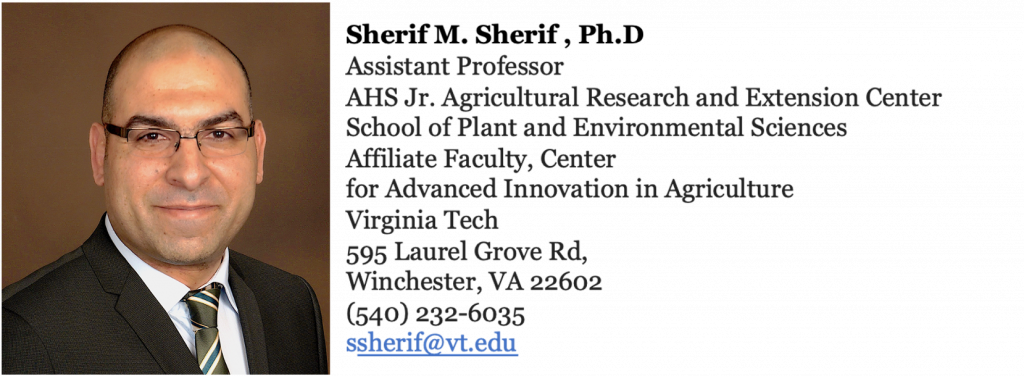
As we enter the optimal window for thinning treatments in the Winchester/Frederick County area, it’s important to consider the best options for your apple trees. In a follow-up to our previous post, we have some important updates for those who chose option A or B.
If you went with option A, and applied your thinning treatments last week (April 25-27) because you had larger fruit, you won’t need to do any further treatment for at least two weeks after this treatment. Wait until you can see signs of fruit abscission and/or fruits showing distinct segregation in size before deciding if another thinning treatment is necessary. For those who went with option B due to the low temperatures, this Friday and over the weekend may provide better thinning conditions. Temperatures are expected to rise above 65F on Friday and reach 72F on Sunday, with even higher temperatures on Monday. If your average fruit size is 15mm or above, start thinning on Friday and Saturday. If your fruits are less than 15mm, wait until Monday when temperatures are expected to reach around 78F and remain warm and cloudy for the rest of the week. Trees are currently in a carbohydrate surplus state, which could sustain until Friday, so you may need to pump up the rate to 30% more than the standard rate. Check the model the day before the application to see the recommended rate in the last column.

For apple growers in Central Virginia, the same advice applies, except that you can start thinning treatments on Thursday if the forecasted temperature stays at 65F or higher. If your current fruit size is less than 15mm, consider Monday (5/8) as the main thinning day. Use the model to determine whether to apply the standard rate or increase it. If the model suggests adding oil to the tank to increase efficiency, it’s worth considering, especially if your fruits have exceeded 15mm and this is your final chance to get the top part of the canopy in shape. However, keep in mind that Captan should not be used 4-5 days before and after applications containing oil, as this can cause significant damage to fruit quality. In summary, timing and temperature are critical when it comes to thinning treatments for apple trees. Follow these guidelines to ensure optimal results for your fruit harvest.

When it comes to thinning apple trees, it’s important to consider the optimal thinning conditions that increase return bloom, especially for cultivars with a tendency for biennial bearing, such as Honeycrisp, Golden Delicious, and Fuji. If you’re looking to improve return bloom for Honeycrisp and Golden Delicious, we have a recipe that has been endorsed by many and is based on our own research over the past few years.
First, use NAA applications for fruit thinning at a fruit size of 6-15 mm, or within 30 days of full bloom. The recommended mixture is NAA @ 3 oz + Sevin @ 1 qt + Regulaid @ 1pt/100 gal/acre. In addition to NAA applications for thinning, NAA applications (@ 2-4 oz/100 gal without carbaryl or oil) should start at a fruit size of 30-35 mm and repeated 2 times at 7-10 day intervals. The rates of NAA are based on Refine 3.5 and PoMaxa. Make rate adjustments if using Refine 6.25.
For improving return bloom in Fuji and Red Delicious, we recommend using ethephon. Don’t use NAA with Fuji and Red Delicious. Apply 1-4 applications of ethephon at 0.5 pt/100 gal (without carbaryl or oil) starting at a fruit size of 30-35 mm in diameter and repeated at 7-10 day intervals. A surfactant is not necessary if ethephon is applied with cover sprays. Ethephon at this low concentration and stage of fruit development will not cause any thinning, but it should improve return bloom.

